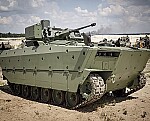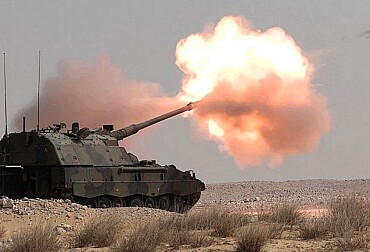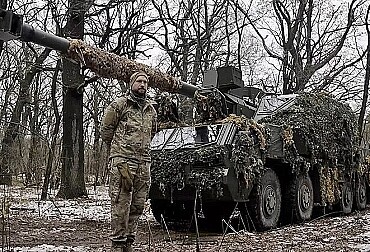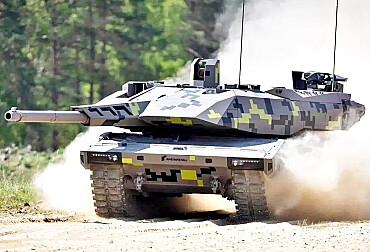Russian artillery – the feared and capable enemy
Military operations in Ukraine since 2014 and the Russian invasion after 2022 in a large scale highlight the return of artillery to the forefront of the symetric warfare. The use of coordinated strikes with the implementation of drones and guidance systems coupled with the use of a wide variety of launchers and ammunition bring devastating effectiveness.
Having inherited a plethora of artillery vehicles from the Soviet army, some of which were placed in reserve during the 1990s, Russia decided to keep a certain number of them. It has also modernised them in order to deal with the main obsolescences, particularly concerning targeting systems. In addition, the restructuring of Russian land forces aimed at increasing their mobility and speed of reaction has placed artillery capabilities at the forefront of tactics, with the task of clearing the way for armoured vehicles and infantry.
2S19 MSTA-S and 2S35 Koalitsiya-SV
A key vehicle in contemporary Soviet-Russian self-propelled artillery, the 2S19 MSTA-S was developed in the mid-1970s, with the aim of modernising artillery around a multi-purpose vehicle deploying a new 152mm gun. This new project was also a response to the arrival of new 155mm artillery pieces in NATO countries. They offered ranges of 24 km for conventional projectiles and up to 30 km for projectiles with additional propulsion. The Soviet military quickly realised that they risked finding themselves in the very delicate situation of not being able to fire without entering the Western artillery engagement zone.
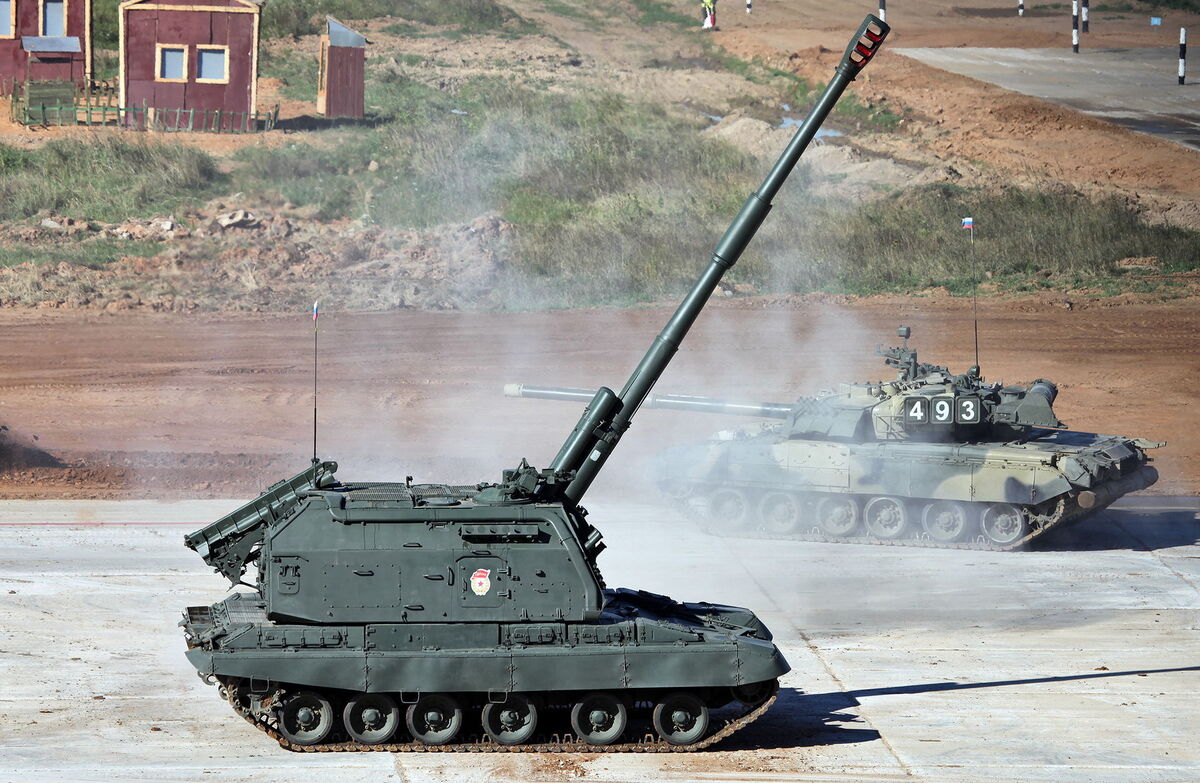
Built on the chassis of the T-80 tank, the 2S19 MSTA-S has a 152mm 2A46 gun installed in a manned turret housing some of the five crew members and carrying 50 shells. Capable of striking at distances of up to 30 km with a rate of fire of 7–8 rounds/min, the 2S19 is currently the core of the Russian self-propelled artillery fleet, with several hundreds units in service. With the vehicle lagging behind its Western (most notably the German PzH2000 or the British AS-90) and Chinese (Type-88) counterparts in terms of engagement range, optics and rate of fire, the Russians developed two standard upgrades: the 2S19M1 and 2S19M2. These variants also made it possible to integrate the vehicle into the Russian Reconnaissance and Ordnance System (ROS), significantly increasing its performance. Production of the 2S19M2 is currently continuing, although it is due to come to an end with the arrival of the 2S35 Koalitsiya-SV, whose engagement range has been extended to 40-45 km, which will replace the Russian army's oldest units.
In 2013, the 2S35 Koalitsiya-SV, a new prototype with a single barrel, left the factory. With this new 152 mm 2A88 gun, the 2S35 has a configuration inspired by that of the T-14 Armata tank: the three-man crew sits in an armoured capsule installed at the front of the chassis, which is derived from that of the T-90, from which it also borrows the engine. Eventually, this 48-t vehicle will be fitted with a new chassis derived from the T-14. The turret is fully automated, which increases the firing capacity to between 12 and 14 shells per minute, with 70 shells with a maximum range of 80 km (with additional propulsion) stored in the back of the turret. The 2S35 could also use the 30F39 guided shell (Krasnopol-M system).
2S7 Pion, 2S7M Malka, 2S3 Akatsiya and 2S5 Giatsin-S
The 2S7 Pion is an ultra-heavy self-propelled howitzer with a 203mm 2A44 gun mounted on a tracked chassis derived from that of the T-80 tank. The Pion is designed to target heavily fortified and/or high value-added targets, such as command posts. It entered service in 1975 and was produced in just over 500 units until 1990. It can carry four shells capable of hitting targets up to 47km away (with additional propulsion), a capacity increased to eight shells on the 2S7M Malka version. By 2020 Russia had around 60 units in service and 250 in reserve, and has launched a programme to modernise its 2S7M Malka, replacing imported mechanical components as well as sighting, communication and radio systems.
The 2S3 Akatsiya and 2S5 Giatsin-S are 152mm heavy self-propelled guns equipped with a 152mm 2A33 gun mounted on a tracked chassis derived from that of the 2K11 Krug and carrying a 40-round magazine (later increased to 46 rounds) capable of hitting up to 20km. The 2S3 entered service in 1971 and over 4,000 were produced until 2003. There are still hundreds in Russian service, which are due to be replaced by the MSTA-S and Koalitsiya-SV. Compared to modern systems, it has a very low rate of fire of 2–4 shells/min. Between 1976 and 1993 over 2,000 of the 2S5, fitted with a 152mm 2A37 tube on a tracked chassis identical to that of the 2S3, were produced. This self-propelled gun, which carries 30 shells, was originally designed to fire a nuclear-tipped shell capable of striking 20 km away. Russia currently still has several dozens of 2S5s in service.
Towed artillery
In addition to self-propelled vehicles, Russia also has a large fleet of towed artillery, which uses the guns deployed by the self-propelled artillery. This towed artillery was in the limelight during the operations in Syria, as it was used extensively in the various intervention zones, which seems to have brought back to the fore the usefulness of such equipment for the Russian military. The three models used by the Russian land forces and navy are the 2A18M (D-30A) 122mm gun (fitted to the 2S1 Gvozdika), the 2A65 MSTA-B 152mm gun (fitted to the 2S19 MSTA-S) and the 2B16 Nona-K 120mm gun (fitted to the 2S9 Nona-S).
Russian Artillery Battalions
Most Russian self-propelled artillery battalions are based on three artillery batteries, each battery with six artillery pieces = 18 artillery pieces per battalion. The self-propelled artillery battalion's ability to fire is highly dependent on the type of self-propelled artillery piece with which it is equipped, reconnaissance assets, C2, and logistical capability. In terms of targeting fire, the Russian self-propelled artillery battalion relies on reconnaissance assets to find targets and a C2 system to relay targets from reconnaissance assets, perform mission planning and create fire data.
Oryx lists 176 Akatsiya systems lost in the Ukraine so far, 78 Giatsins, 225 Mstas, 51 Msta SM2s, 31 Pions, 55 Tyulpans. In all, the Russian army has lost 862 pieces of self-propelled artillery since February 2022, together with 420 pieces of towed artillery.




